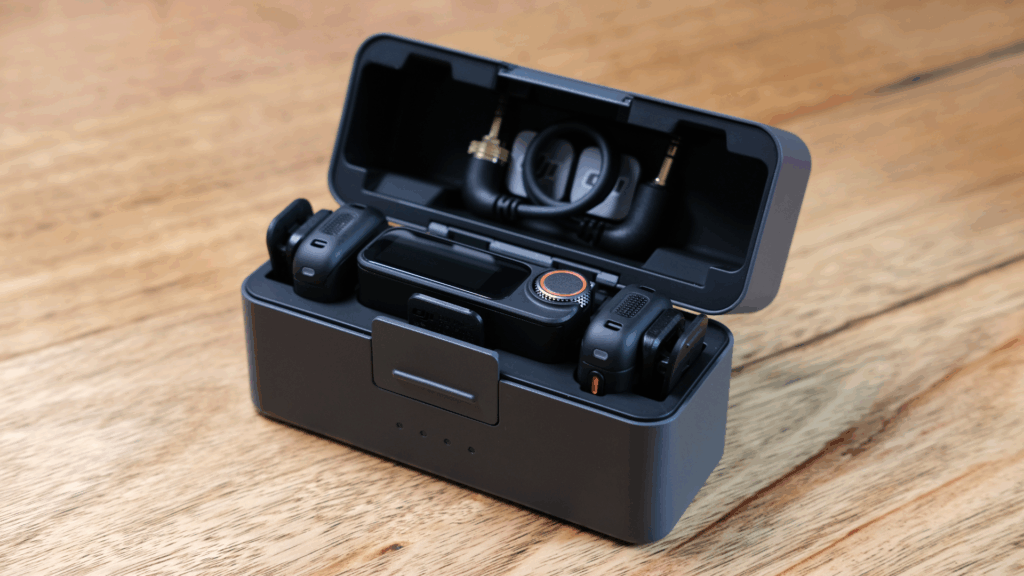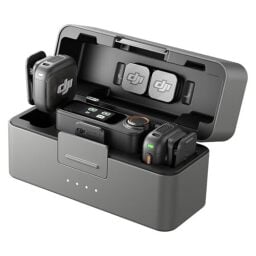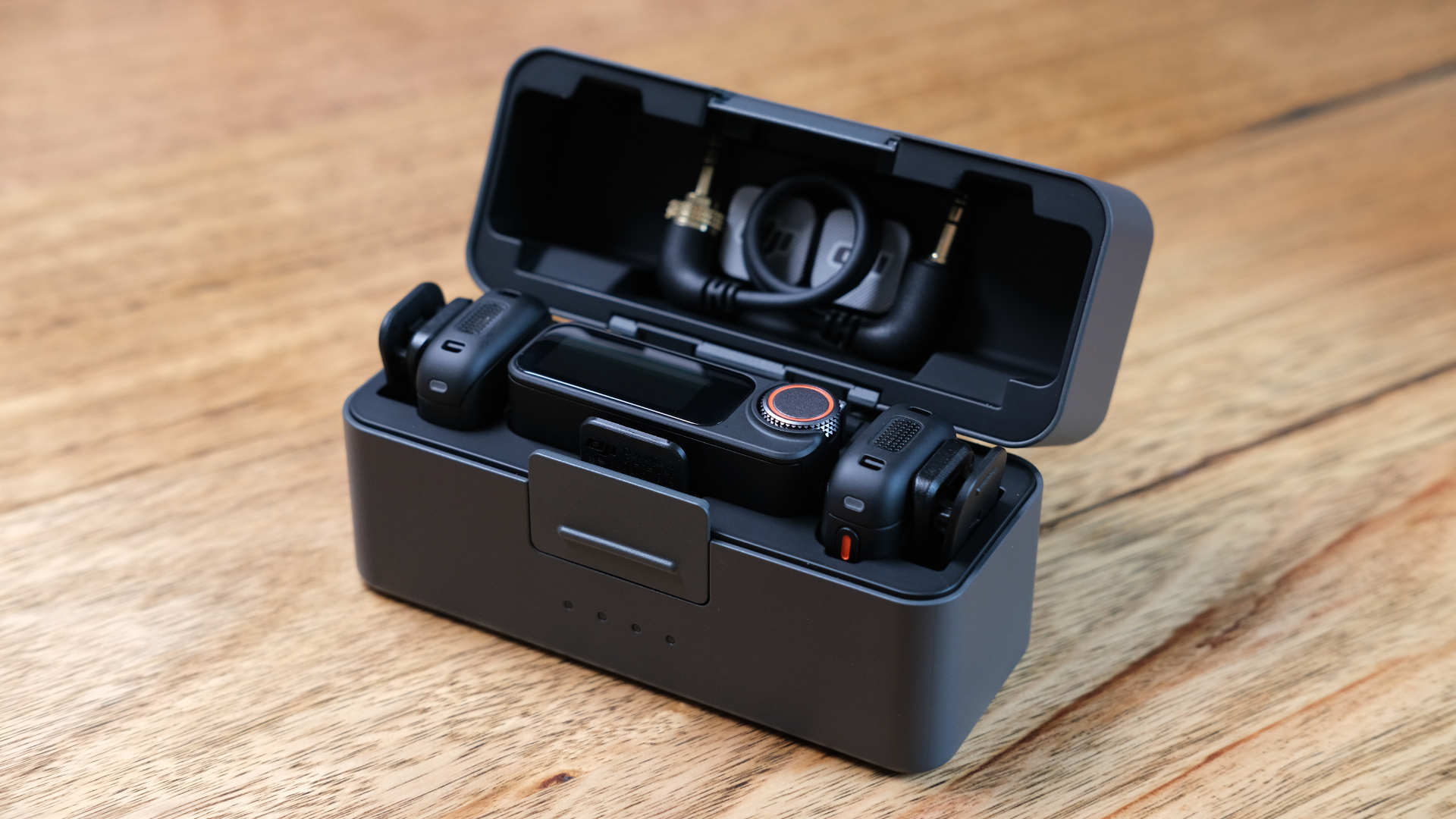
DJI‘s Mic 2 and Mic Mini quickly became standard gear for content creators after their release last year. The beloved lapel mics are simple to use, versatile, and provide a significant audio upgrade at a reasonable cost.
Now DJI has upgraded its offerings with the Mic 3, combining some of the previous models’ best features. However, it also trims away a few significant ones, which could be a dealbreaker for certain advanced users.
The DJI Mic 3 packs a lot into a tiny package
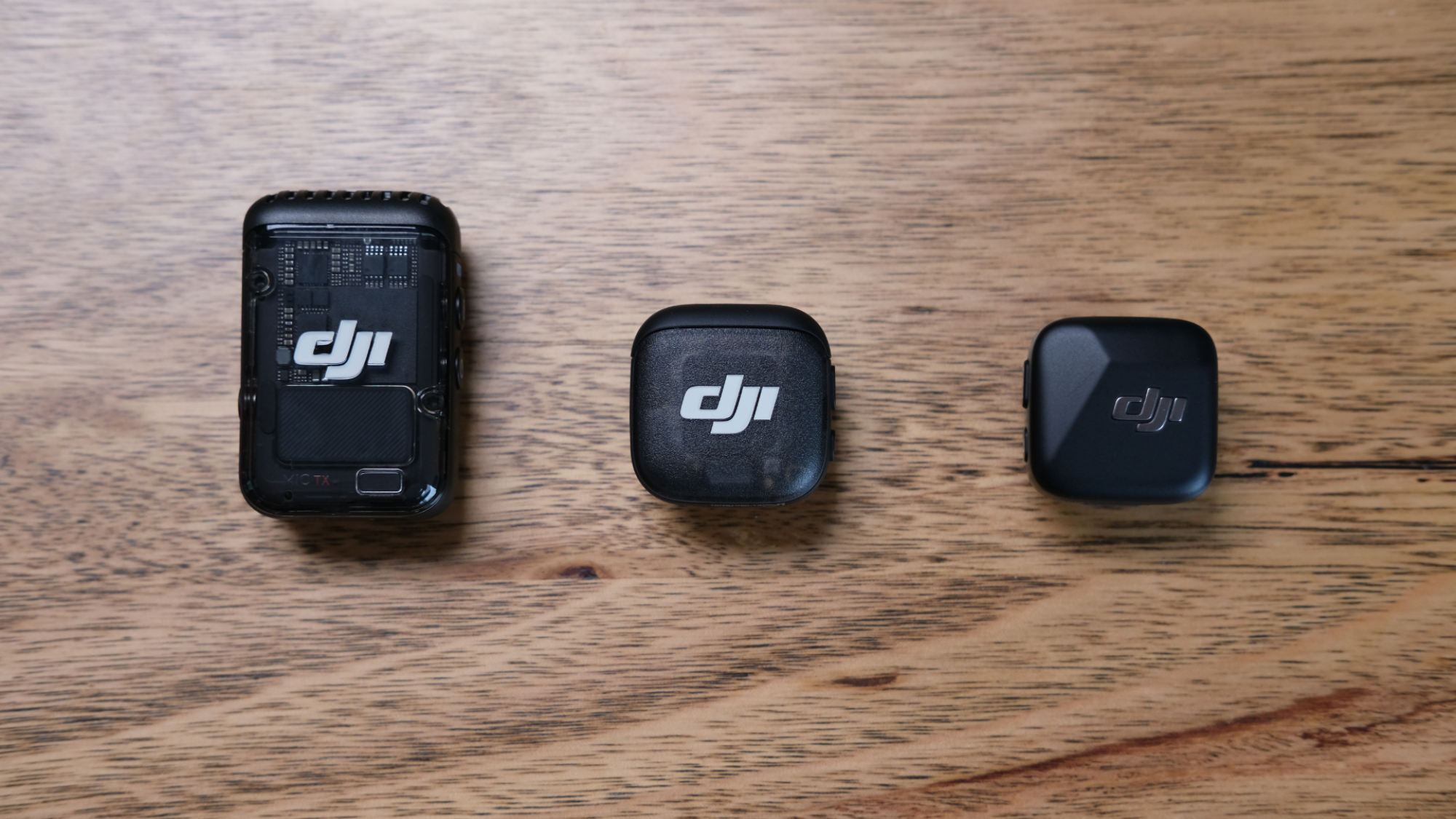
Credit: A. Yeo
The DJI Mic 3’s stamp-sized transmitter has a magnetic back which allows it to be affixed to clothes by either sandwiching the cloth between the transmitter and included magnet, or using the clip attachment. It’s an elegant design, with the clip cradling the transmitter and holding it in place with notches. This provides a sturdy base when squeezing the clip open, and is incredibly quick and easy to deploy.
Using the magnets to attach the transmitter is slightly more fiddly, but it adds the benefit of making the Mic 3 extremely light to wear. Though Mashable didn’t have any issues with the Mic 3 detaching from our clothes, it’s worth noting that both of its attachment methods ultimately rely on magnets. A more secure option would certainly have been appreciated for greater peace of mind, particularly as the transmitter contains the microphone, so it needs to be placed close to the audio source rather than safely in a pocket.
Unlike the Mic 2, the Mic 3 transmitter unfortunately doesn’t have an onboard USB-C port. As such, users are reliant on either the case or DJI’s proprietary magnetic charging cable, which is only available in some of the Mic 3 bundles. This may cause issues, as it’s easy to lose such accessories or just not have them on hand when needed, and it doesn’t appear as though DJI sells replacements separately. The Mic 3’s lack of a USB-C port makes grabbing files off the transmitters more difficult as well.
Fortunately, actually recording with the Mic 3 is relatively straightforward, as it’s easy to navigate menus and view information on the receiver for the most part. Even as a fan of physical buttons and dials, Mashable typically defaulted to using the receiver’s touch screen, which was responsive and simple to navigate.
DJI Mic 3’s charging case keeps everything neatly organised
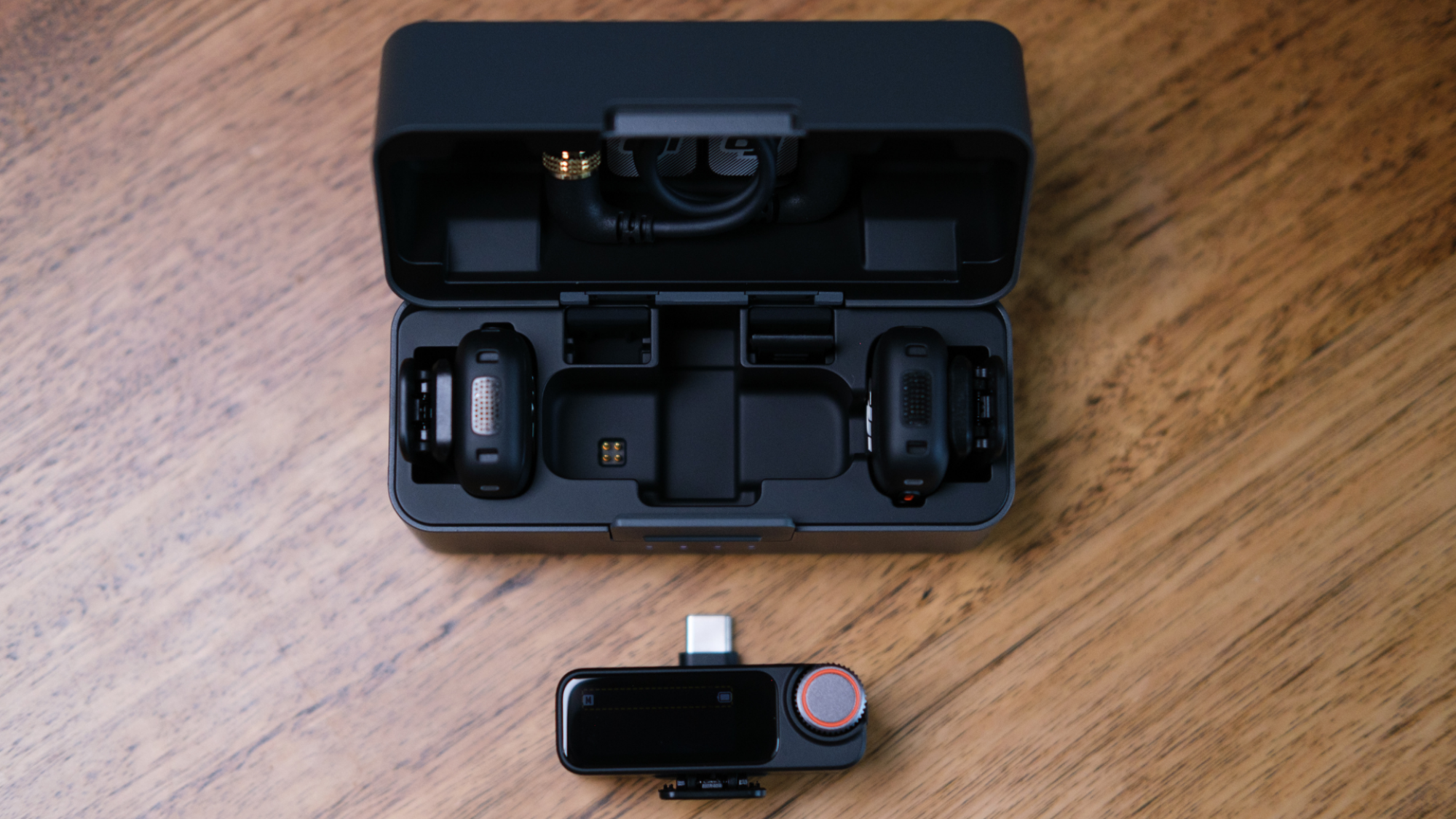
Credit: A. Yeo
DJI’s Mic 3 comes in a few different bundle configurations, offering different accessories according to users’ needs. Mashable looked at its most popular option, which includes two microphone transmitters, one receiver, and a charging case. It also comes with a USB-C adapter, four fluffy windscreens, two clips, two magnets, a 3.5mm cable, and a USB-C cable.
All of these except the USB-C cable can be stored in the Mic 3’s charging case, which in turn fits within an included padded carrying pouch. This case is somewhat bulky, especially when compared to the tiny units. Thankfully, its clever design keeps everything organised and streamlined, ensuring the Mic 3 is easy to pick up and use in whatever manner best suits you. You can have a USB-C adapter attached to the receiver, a Lightning adapter (purchased separately) on standby, and the receiver’s protective cover stowed neatly away — ready for anything without the risk of losing anything.
That isn’t to say that the Mic 3’s charging case couldn’t be improved. It would have been nice to have a reassuring click when storing the 3.5mm cable, but instead it slips into little notches and seems to be held in place with hidden magnets. The cable also has to be removed to access the magnetic clips behind it, which requires a little wrangling since they tend to snap together. They are only magnets, after all. Even so, these are relatively minor gripes considering the charging case’s overall excellent functionality.
DJI further claims that the charging case extends the Mic 3’s operating time to 28 hours, with the transmitters otherwise lasting eight hours and the receiver lasting 10. Most users are unlikely to need that kind of run time, though it’s nice to know you’ll always be charged up, with a five-minute charge reportedly providing two hours of use.
The DJI Mic 3 trades external lav mic functionality for onboard recording

Credit: A. Yeo
The Mic 3’s smaller form factor and loss of the USB-C port aren’t the only notable changes DJI made when compared to the Mic 2. Perhaps controversially, the Mic 3 has removed the option to plug an external lav mic into its transmitter, a feature which had been available in its predecessor.
This is an unexpected and surprising change. While visible mic transmitters are now commonplace in social media content, broadcast shoots generally still use subtle or even hidden lapel mics. Removing this option may alienate a segment of the market that the Mic 3’s features seem to court — those that hang in the increasingly blurred space between content creation and professional production. The loss of such functionality is even more confusing considering that DJI has introduced timecode support, which pushes the Mic 3 further toward a professional market.
Of course, DJI had to make some trade-offs to keep its units so small while still including on-board recording. Each Mic 3 transmitter has a sizable 32GB of storage, which can accommodate everything from the default 24-bit recordings through to larger 32-bit float files. (32-bit float is a file format that can capture a wider dynamic range, enabling you to recover audio that would otherwise clip if too loud or hiss if too quiet.)
There’s even enough space for dual file recording, which is a somewhat unique feature in the Mic 3. Dual file recording enables the transmitter to record and store two different audio tracks simultaneously: both a raw recording and an “algorithm-enhanced version.” This is just a version with whichever on-board effects you’ve turned on, such as voice tone presets, adaptive gain control, noise cancellation, and low cut.
Such functionality makes the Mic 3 stand out, offering the potential to streamline your workflow while still keeping the flexibility of lossless recording. Lossless files provide the scope to manually tweak the sound of your audio, but having a version that’s already gone through some basic processing could be a real time saver if the effects are to your liking. While having a lossless file to fall back on is always a great backup, all most creators need is for their audio to sound good.
The DJI Mic 3’s sound quality delivers
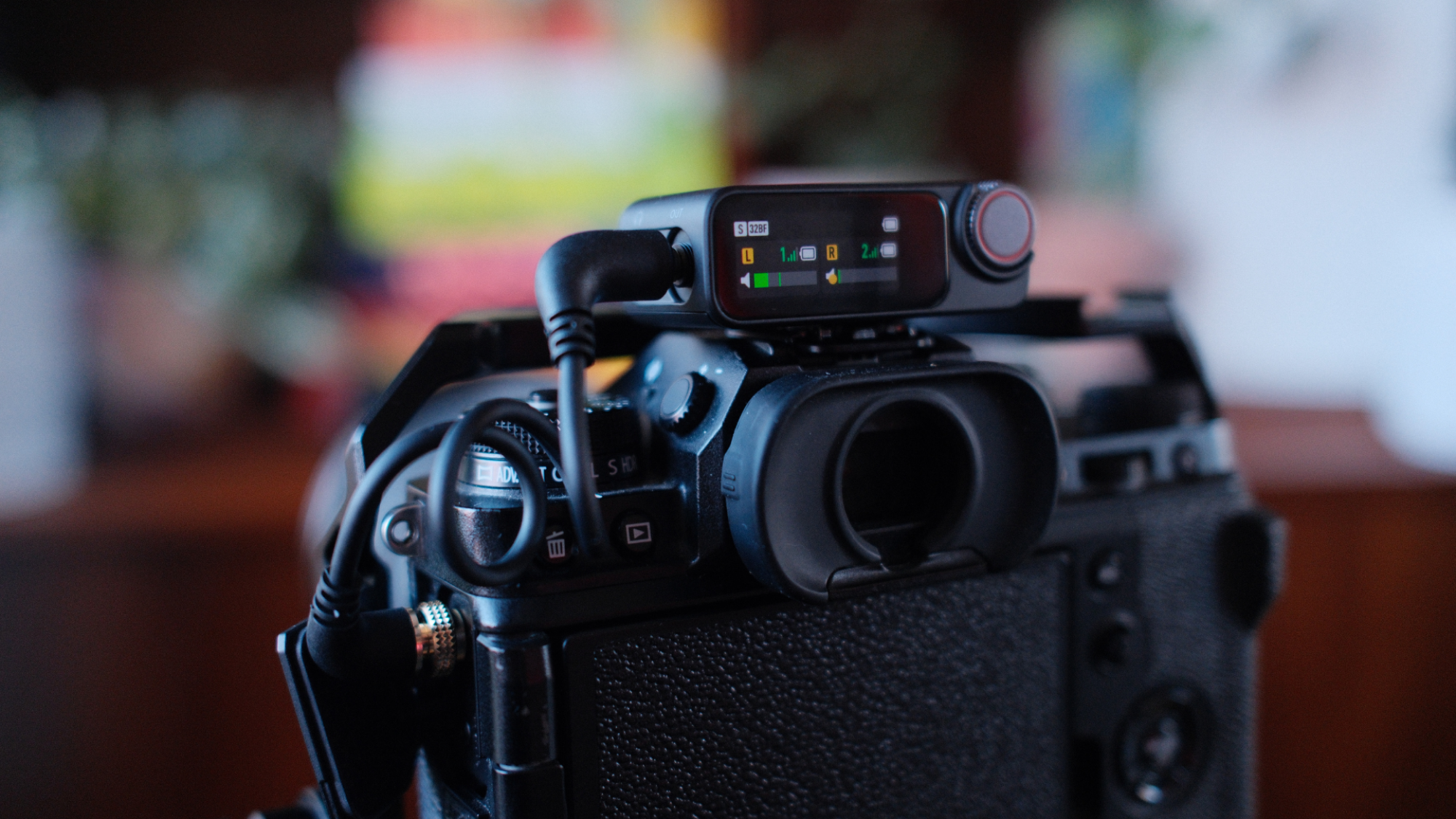
Credit: A. Yeo
Like its predecessors, the DJI Mic 3 offers solid sound quality. The microphone is surprisingly sensitive and can pick up everything with clarity, though this does include background noise. Fortunately, the Mic 3’s on-board effects include two levels of noise cancellation, which work impressively well. The strong setting can cause artefacts from time to time, but it’s still good enough for quick and easy shooting.
Choice and flexibility seem to be the name of the game for the Mic 3, with a wide range of settings and effects available. The three voice tone presents (regular, rich, and bright) are relatively simple and subtle, and feel more suited for stylistic tweaking rather than corrective equalisation.
Meanwhile, the Mic 3’s adaptive gain control offers two modes: automatic and dynamic. This is basically compression, with automatic turning down sudden bursts in volume to prevent clipping, while dynamic also increases the gain on quieter sounds to make everything more level.
Like all of the Mic 3’s effects, its adaptive gain control works very solidly. It also seems like a more useful baked-in “safety” option than the Mic 2’s safety track, which simply used the right channel to record a version at -6dB in case of clipping. This made for a messy workflow, requiring users to separate the channels and splice in the -6dB version wherever there was clipping. In contrast, the Mic 3’s adaptive gain control automates the process to deliver a single track that should be good to go (or very close to), while dual file recording provides a clean backup.
The Mic 3 is set to internally record 24-bit single files by default. When asked why, DJI told Mashable that 24-bit is more commonly used, uses smaller files, and is more user-friendly for beginners, while utilizing 32-bit requires more post-production and technical skill. It’s another example of the Mic 3 seeking to offer as close to set-and-forget as possible, while still giving plenty of options for flexibility.
Of course, all this is only good if you actually remember to hit record on the Mic 3 transmitters, as internal recording isn’t triggered by camera recording. If you’re likely to forget, the receiver screen clearly highlights when a transmitter is recording internally, and you can set them to automatically start recording as soon as they turn on.
For those who prefer not to marry video and audio files in post but are still chasing high res, you can also opt to send the receiver 48kHz 24-bit lossless audio. Otherwise, the Mic 3 transmitter sends encoded 24-bit when lossless audio is turned off, with 32-bit float reserved for internal recording. DJI states that lossless audio reduces the transmitter’s battery life by approximately two hours, and its 400m (1312ft) maximum transmission range by 50 percent.
Should you buy the DJI Mic 3?
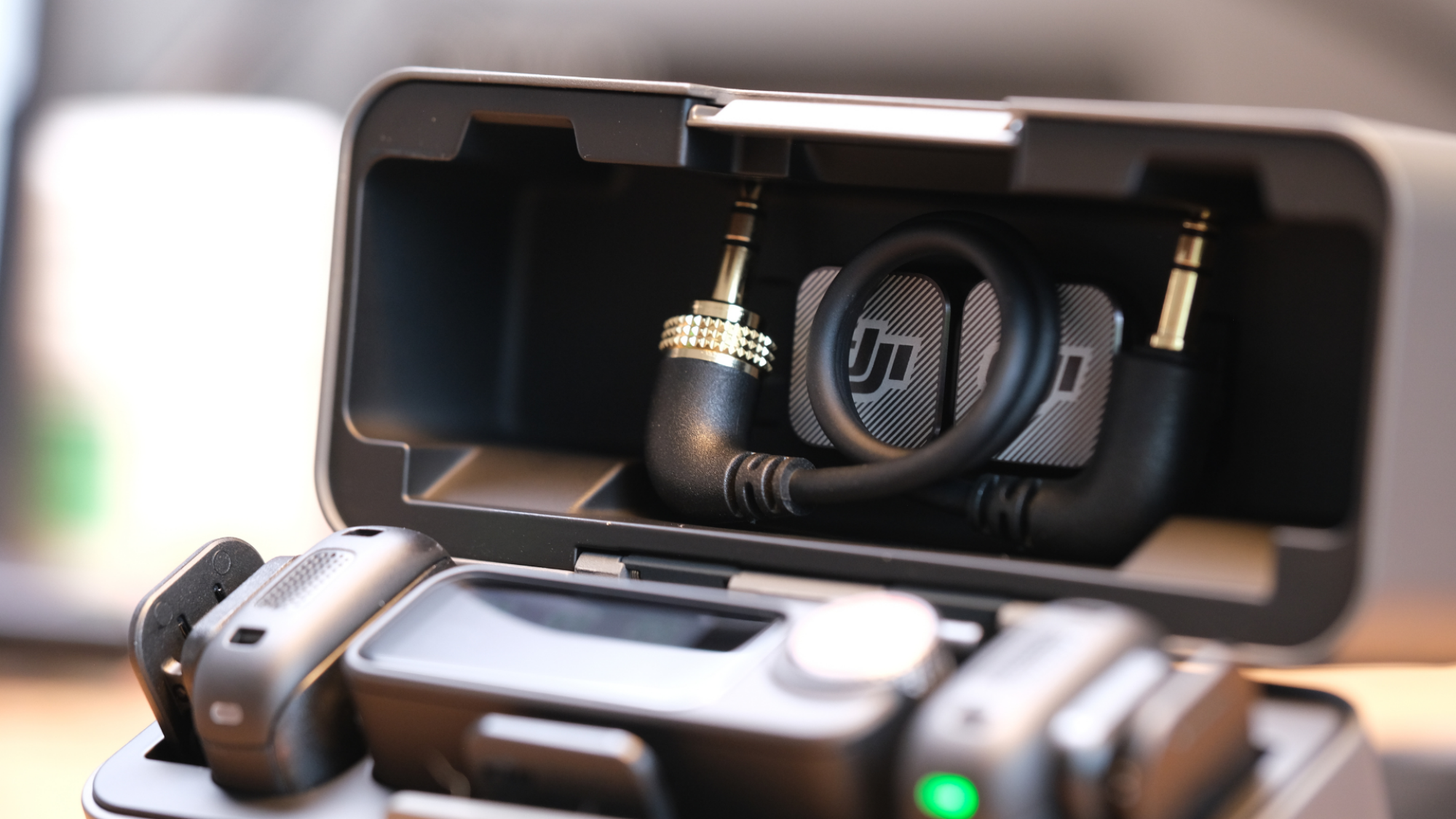
Credit: A. Yeo
If you only film content on your phone, you’ll likely be better off picking up the DJI Mic Mini and saving yourself some cash. It still has some form of noise cancellation and adaptive gain control — the Mic 3’s two most useful effects — and is a fraction of the cost. You will have to sacrifice internal recording, though most people who record and edit on their phones are less likely to need it anyway.
However, if you shoot anything more complex, and particularly if you film with both a phone and a dedicated camera, then you’ll greatly benefit from what the DJI Mic 3 has to offer. The receiver’s touchscreen makes functionality quick and easy, with information ready at a glance, while the 32-bit float internal recording is a valuable backup. The timecode support will be very welcome for multicam shoots as well.
The DJI Mic 3 is a beautifully designed, well-made lapel mic that provides impressive audio quality, while also offering significant versatility regardless of what you’re using to film.
DJI’s products have become more difficult to get your hands on in the U.S., as the federal government poses significant challenges to the company’s business stateside. Even so, those in the U.S. may still be able to procure the Mic 3 via unofficial third parties, and of course it’s still easily available in other parts of the world.

